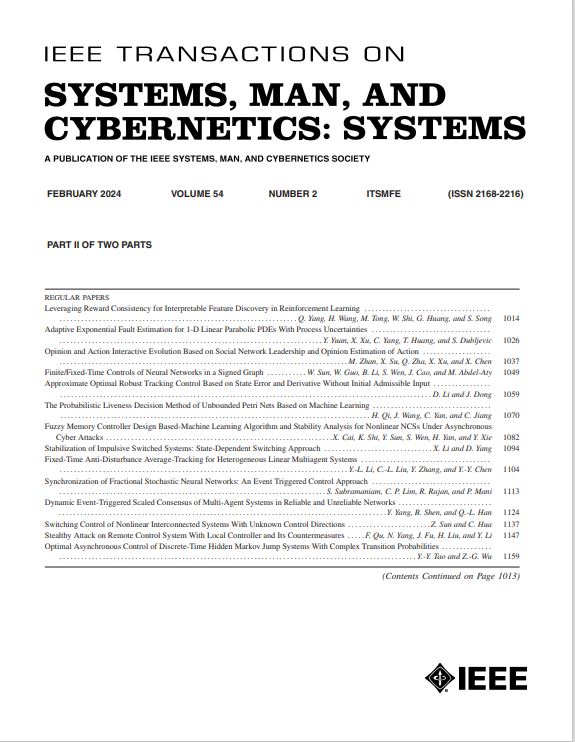SOTIF-Oriented Distributed Control for Connected Autonomous Vehicles Platoons
IF 8.6
1区 计算机科学
Q1 AUTOMATION & CONTROL SYSTEMS
IEEE Transactions on Systems Man Cybernetics-Systems
Pub Date : 2025-02-19
DOI:10.1109/TSMC.2025.3538043
引用次数: 0
Abstract
This article extends the problem of safety of the intended functionality (SOTIF) to the platooning of connected autonomous vehicles (CAVs). In such multivehicle systems, SOTIF objectives are particularly challenging, since new issues arise due to the presence of interactions that propagate and intensify the effects and the risk connected to faults/failures/uncertainties, triggered by any platoon member and external conditions. To tackle and solve the SOTIF-oriented platoon control problem, we propose a robust and resilient decentralized control protocol, based on distributed observer which exploits the information shared via the Vehicle-to-Everything (V2X) communication network. The approach allows maintaining acceptable SOTIF performance in adversarial conditions, mitigating the effects of the unreasonable risks originated from sensors/actuators performance limitations/faults and disturbances. The uniformly ultimate bounded (UUB) stability and the input-to-state string stability (ISSS) of the platoon dynamics are analytically proved via the Lyapunov theory. Feasible linear matrix inequalities (LMIs) are obtained as stability conditions, whose solution allows adapting the distributed control/observer gains according to leader-tracking performance and robustness margins. A detailed analysis via the vehicular co-simulation platform mixed traffic simulator (MiTraS) corroborates the theoretical derivations and shows the achievement of the SOTIF platoon goals for a set of nontrivial and uncertain driving scenarios.求助全文
约1分钟内获得全文
求助全文
来源期刊

IEEE Transactions on Systems Man Cybernetics-Systems
AUTOMATION & CONTROL SYSTEMS-COMPUTER SCIENCE, CYBERNETICS
CiteScore
18.50
自引率
11.50%
发文量
812
审稿时长
6 months
期刊介绍:
The IEEE Transactions on Systems, Man, and Cybernetics: Systems encompasses the fields of systems engineering, covering issue formulation, analysis, and modeling throughout the systems engineering lifecycle phases. It addresses decision-making, issue interpretation, systems management, processes, and various methods such as optimization, modeling, and simulation in the development and deployment of large systems.
 求助内容:
求助内容: 应助结果提醒方式:
应助结果提醒方式:


